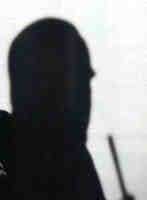Ghosts of the Razorfish Subnetwork
To celebrate Microsoft's announced acquisition of aQuantive, a company which is the corporate successor to famed Silicon Alley agency Razorfish, we bring you this tour of the Razorfish Subnetwork, which first ran on Ghost Sites in May of 2005.

The Razorfish Subnetwork was an underground channel maintained by the legendary Silicon Alley Web design company Razorfish.
The idea behind the subnetwork was to serve as a kind of "playground" to test new and cool stuff that wouldn't alienate Razorfish's growing list of A-level clients such as Time-Warner. If any of the ideas gathered sufficient buzz, it might even break free of the subnetwork to become its own self-sustaining Web property. The subnetwork, in other words, was an online "incubator," from which something good might hatch.
I inspected the current state of the Razorfish subnetwork recently, and found it to have many of the worst earmarks of bitrot and cyber-decay. For the first time, its pages are defaced by sleazy ads promoting cheap loans, cheap love, and risky poker games. One cannot concieve of Jeff Dachis and Craig Kanarick, Razorfish's founders, approving of these commercial intrusions. But, of course, Dachis and Kanarick are long gone, leaving their prized interactive playpen to vending vipers. And while the subnetwork's various Flash animation features continue to function, including Brain Girl, Central Toilet, and the Pod People, none of them have been updated since sometime in 2002, which suggests that this incubator is no longer functioning, and that the eggs within it will never hatch.
Still, for those who appreciate late-1990's CyberKitsch, this ghostly subnetwork is an interesting place to spend a few idle minutes. One can almost hear the delightful squeals that must have emenated from Razorfish's cubicles when "Brain Girl" made her surreal, Keith Haringesque entrance into our collective consciousness, or when Central Toilet first flushed, or when the Pod People first delighted the goateed, black-clad digirati within Razorfish's senior management.
Today, with the benefit of many years hindsight, these "cutting-edged intereactive animations" just look like sad, amateurish early experiments made by overworked designers stealing time from the real business of Razorfish, which was to become the J. Walter Thompson of the online world. One really wonders why these artifacts of the mid-1990's are still hanging around, except, as is the case with many sites on the Boulevard of Broken Links, they are preserved because someone, somewhere, hopes their aesthetic merit will, one sweet day, be finally appreciated.
If you wait around long enough, it's been said, everything comes back into fashion. But I don't think we've yet arrived at the day, and I often wonder whether it will occur in any of our own lifetimes.
Labels: aQuantive, Microsoft, Razorfish, Silicon Alley History



